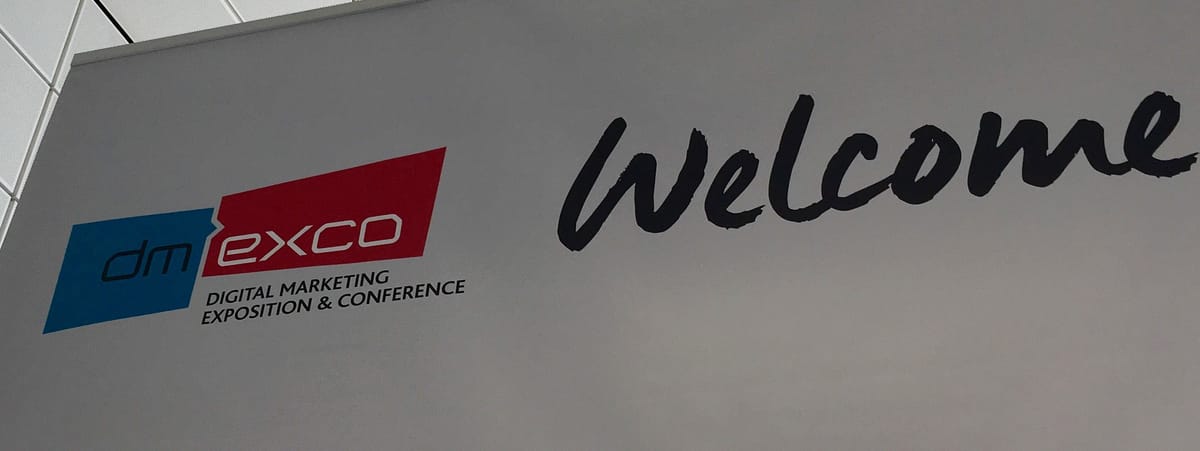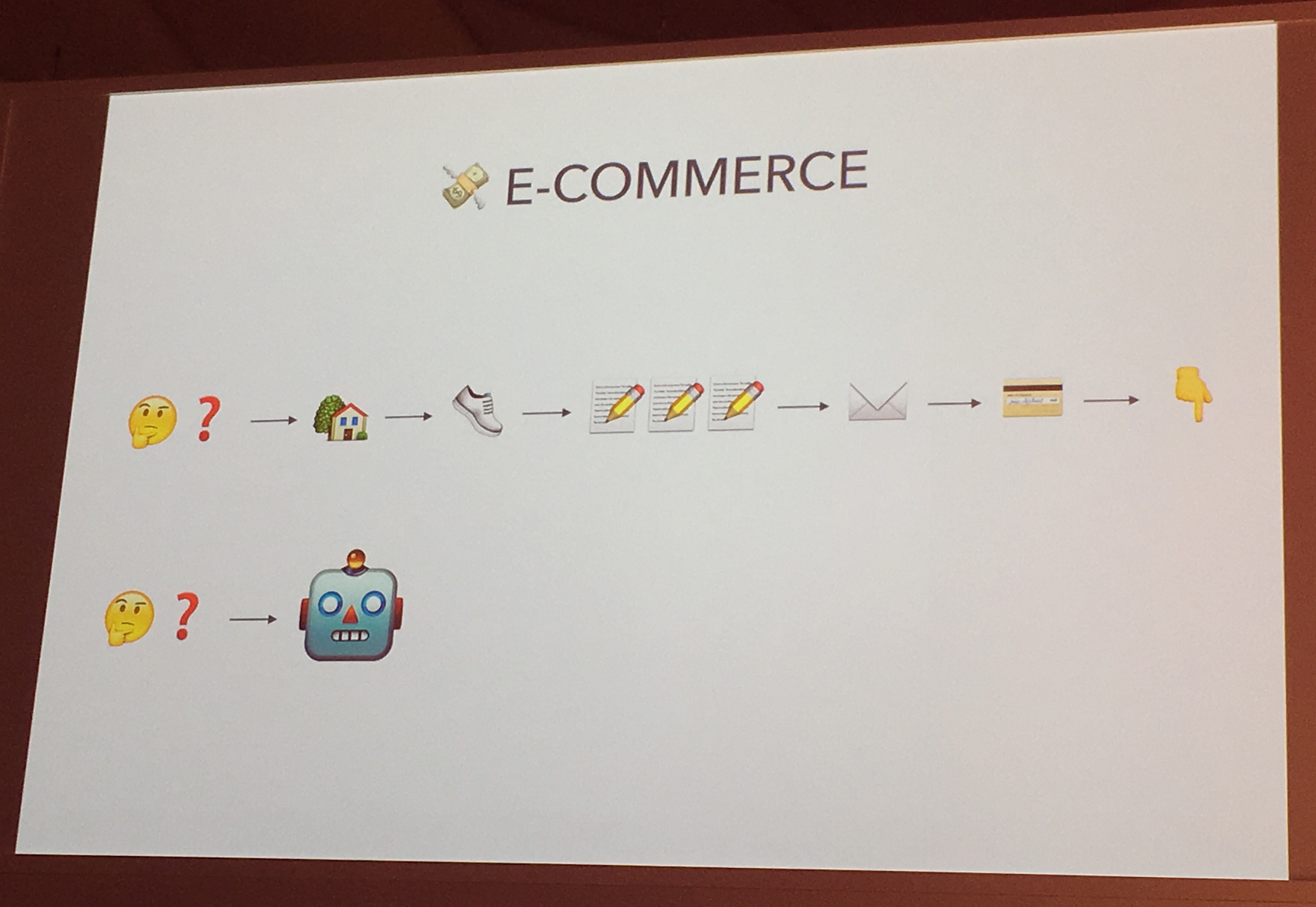Trends from DMEXCO 2016 changing the world
I attended DMEXCO, one of the top events in digital marketing, earlier this month in Cologne, Germany. DMEXCO is huge: it has over 1000 exhibitors and over dozen stages providing engaging keynotes and speeches non-stop. In this blog, I have included the main topics from the event.

I attended DMEXCO, one of the top events in digital marketing, earlier this month in Cologne, Germany. DMEXCO is huge: it has over 1000 exhibitors and over dozen stages providing engaging keynotes and speeches non-stop. In this blog, I have included the main topics from the event. That being said, there is no way one man can cover everything happening during the hectic expo days. (By the way, I have separated posts for both expo days, read them here and here.) I feel that these trends were present more or less throughout the event, and all keynotes touched upon one if not more of them. The impact these trends have is not limited to only digital marketing. I believe they are about to change how the business world as we know it operates.
The customer is a king.
The customer has taken his/her rightful place on the throne. This means that customer has been put in the centre of everything: from product development to marketing and sales. Today, customer journey and customer experience should be focus points for every single company. The driving force for this development is data. Data is available from a multitude of sources. Winners in this game are those who can use data to design and improve customer experience plus use correctly timed (yes, based on data) triggers to guide customers on their journey.
What a modern customer wants is experiences. It does not matter if the customer is a consumer, B2B buyer, or the user of bought software. Suresh Vittal Kotha had one of the most impactful keynotes. He encouraged each and everyone in the audience to ask whether or not their business is actually about experiences:
We are not in the business of providing products or services to our customers. We all are in the business of providing experiences!
Tech is about to change everything. Again.
We are (again) on the verge of a massive shift. There is a multitude of new technologies ready to change the world. For example, following technologies are all the rage right now: drones, Internet of Things (IoT), chatbots, wearables, virtual reality, machine learning and artificial intelligence. At DMEXCO, all technologies mentioned above were discussed, but two of them seemed to have especial attention: virtual reality and chatbots.
Multiple exhibitors offered a chance to try out virtual or augmented reality. I had an opportunity to put on virtual reality headset and instantly jump to Smithsonian Institute. Also, with Microsoft Hololens one could watch virtual boxes being moved around. Personally, I would have found Pokemon more interesting than boxes. Want to hear more about virtual reality use cases? Watch this discussion about virtually visiting refugee camps among others:
Conversational Commerce and chatbots were a big topic particularly on the second day. There even were a DMEXCO chatbot available to help attendees navigate through DMEXCO. The highlight of the conversational commerce agenda was a presentation from Outbrain's Matt Crenshaw and Spectrm’s Max Koziolek. In their presentation (watch it here), they dissected CNN’s newsbot and explained some other use cases for chatbots.
 Chatbots are ideal for removing unnecessary steps from ordering online.
Chatbots are ideal for removing unnecessary steps from ordering online.
Then what is the meaning of all this hype around these new technologies for our everyday business? Should companies already be investing in, for example, virtual reality? To some extent, yes. I believe it was Lisa Donahue who gave a fantastic reply to the question whether or not every company needs a strategy for virtual reality. I am taking liberty to expand her guideline to all soon-to-be tech trends:
Not every company needs a strategy for virtual reality, chatbots, drones, or other emerging technologies. However, every company needs a strategy for learning about these new technologies so they can identify future opportunities.
Digital is dead. Long live digital.
The divide between digital and non-digital is gone. Now there is only services and products - or actually just experiences - with both digital and analogue components. For example, both B/H/S and BMW elaborated how they are creating smart and connected experiences for their customers (using IoT). B/S/H is building a connected home where home appliances communicate to each other optimising workflow in the kitchen and elsewhere in the home. BMW is integrating (not just connecting!) car to larger ecosystems bringing down borders between home, office, and car.
This trend is by no means limited to just providing connected devices to customers. Omnichannel customer experience binds together brick-and-mortar and digital shopping. Marketing wants to have coherent message online and offline. And so on. This applies to all aspects of business. No matter what technology (new or old) is powering the digital aspect, it must improve the customer experience and create value for the customer!
Digital part of the offering enables numerous new capabilities but doing or being digital has no value by itself.
I am surely attending DMEXCO next year. It is interesting to see how different the event will be as I am expecting (at least) one of the promising technologies making it to mainstream before next DMEXCO. My bet is on chatbots.
What were your highlights from DMEXCO? Are you going to attend it next year?
This blog has been published Sep 27 2017 on LinkedIn Pulse. See the original here.


![Three Principles Of A Successful Live Chat Operation [2020 Edition]](/content/images/size/w960/2020/01/black-and-white-dark-decoration-faces.jpg)
![Three Principles Of A Successful Live Chat Operation [2019 Edition]](/content/images/size/w960/2019/04/3-principles-2019-header.jpg)
